Traveling throughout the localities in Hai Duong, I suddenly realized that many village wells - the source of life of poor rural areas in the past - are being renovated and carefully preserved by today's generations.
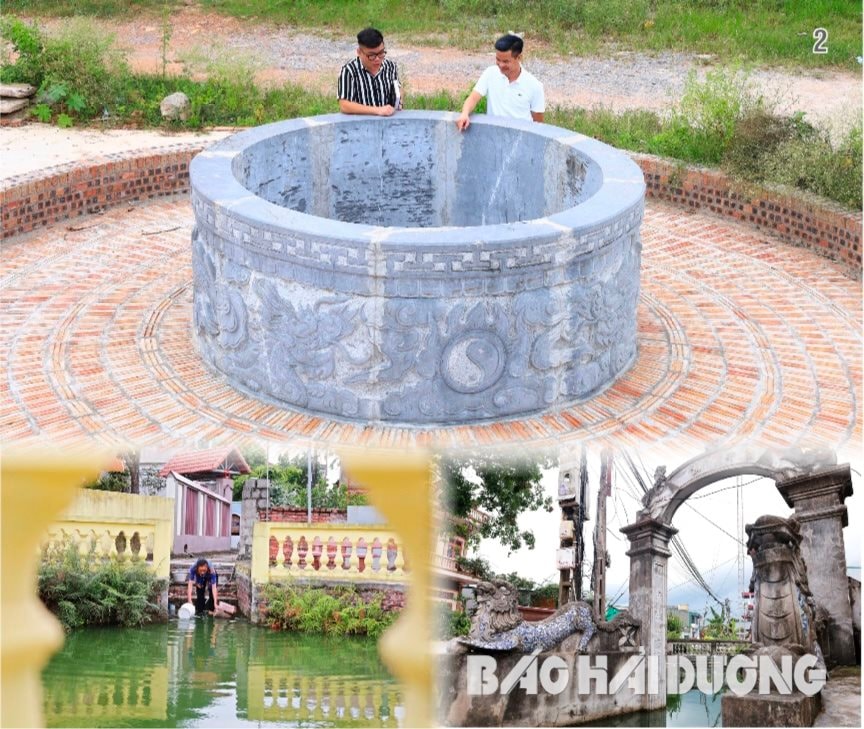
Revival
Visiting Nghia Phu village, Cam Vu commune (Cam Giang) - the hometown of the great physician, Zen master Tue Tinh, I was impressed that this countryside still preserves many cultural sediments. Mr. Nguyen Van Bang, Party cell secretary, village chief excitedly boasted: "Speaking of village wells, perhaps there are few places that have as many as in this village. Our whole village has 5 wells, all of which are still intact. Chua well is located in the Ngoc Khe pagoda grounds, Dinh well is located in the Nghia Phu communal house grounds, the remaining wells are scattered in the hamlets in the village".
I asked the elders in Nghia Phu village but no one knew when the five wells were built. They only remembered that since they were children, they followed their mothers and grandmothers to the well every day to fetch water and store it in earthenware jars for cooking. On summer evenings, villagers often gathered at the edge of the well to sit and enjoy the breeze. Children also followed their grandparents and parents to come here to play and frolic. When thirsty, they scooped up water from the well to drink. Mr. Dang Tien Loc, 77 years old, living next to Viet well, recalled: "In the past, this well was full of water every season. The villagers planted duckweed in the well, so the water was cool and sweet. For many years, the well was like a treasure, providing a source of water to nourish our villagers."
Taking me to visit Viet well in Dinh hamlet, Mr. Bang said that since the introduction of wells and drilled wells, people rarely used village well water. When clean water came to the village, the village wells were almost useless. In many places, people filled in the wells to get soil for other purposes. But the people in Nghia Phu hamlet were determined to preserve them. In recent years, with better economic conditions, people in the hamlets have contributed hundreds of millions of dong and many working days to dredge and repair the village wells, build well walls, and make the steps neat and clean. "Along with the banyan tree and the communal house yard, the village well contributes to creating the unique cultural features of the village. Reviving the village well is also a way for us to show our respect for the heritages left by our ancestors," Mr. Bang shared.
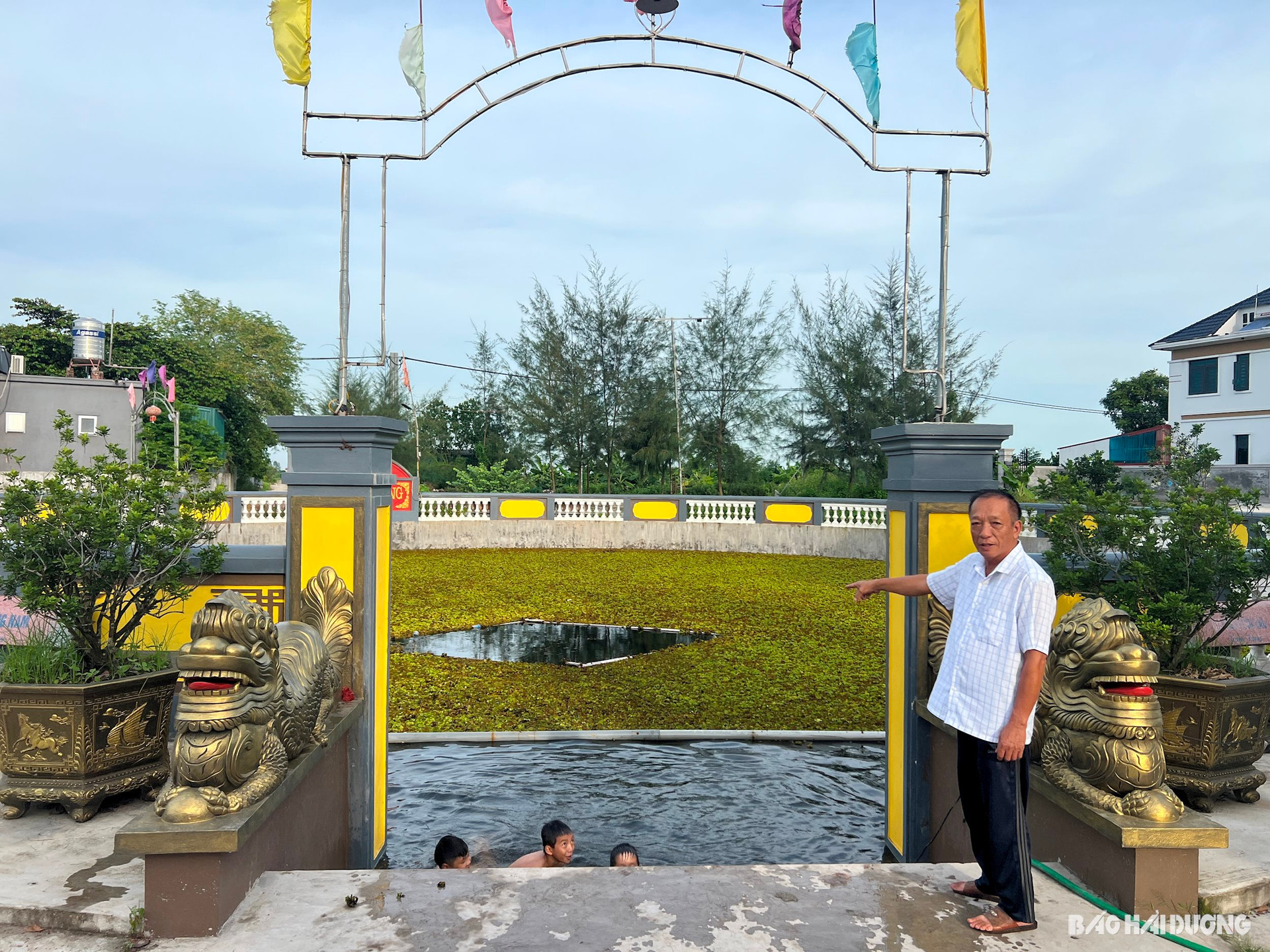
Ngoc Ky Commune (Tu Ky) is also one of the localities in Hai Duong that still preserves many village wells. Chairman of the Commune People's Committee Nguyen Xuan Thoang introduced: "My commune has 5 villages. Every village preserves village wells, Tu Ky Thuong village alone has 2. The people respect and consider village wells as treasures, sacred heritages left by their ancestors, so they have enthusiastically contributed to renovating them to make them very spacious and beautiful."
The village well in Kim Doi village, newly renovated 2 years ago, is one of the largest and most beautiful village wells in Ngoc Ky commune. The well is very large, with a diameter of more than 25 m. The well gate was newly built, with 2 lion statues on both sides, with vivid carvings. From the bottom of the well to the ground, there is a solid embankment. The surrounding wall is built of bricks, painted, and decorated with LED lights. Around the village well, Kim Doi village also built a walking path, a volleyball court, and placed dozens of stone benches for villagers to exercise, play sports, and sit and enjoy the cool air. "The total cost of renovating the village well is more than 500 million VND, all contributed by cadres, people, and children living far from home. We consider the village well as a source of life, closely associated with the lives of the people through many generations. This is also one of the typical cultural works of the village, so the people actively participate in preserving it," said Mr. Nguyen Van An, former Party Secretary of the commune, who was assigned by the village to build and command the renovation of the Kim Doi village well.
Under the Kim Doi village well, water fern is planted almost covering the water surface. Not many places still have village wells with clear and clean water like this village. On hot summer days, children in the village call each other to the well to cool off and play. Adults also come here to walk, play volleyball, enjoy the cool air and conveniently look after the children bathing in the well... All of this has created a truly peaceful countryside scene.
A few dozen steps from the Thuong River dike is the village well of Bac Dau village, Hung Dao commune (Chi Linh) which has just been beautifully restored with socialized resources. This well is different from other places because the well wall is made entirely of green stone, carved with "dragons worshiping the moon" with many very sophisticated details. Right next to the well, people also built an incense tree for people to worship and express their gratitude for the cool, sweet water that has nourished many generations of villagers here.
Preserve unique values
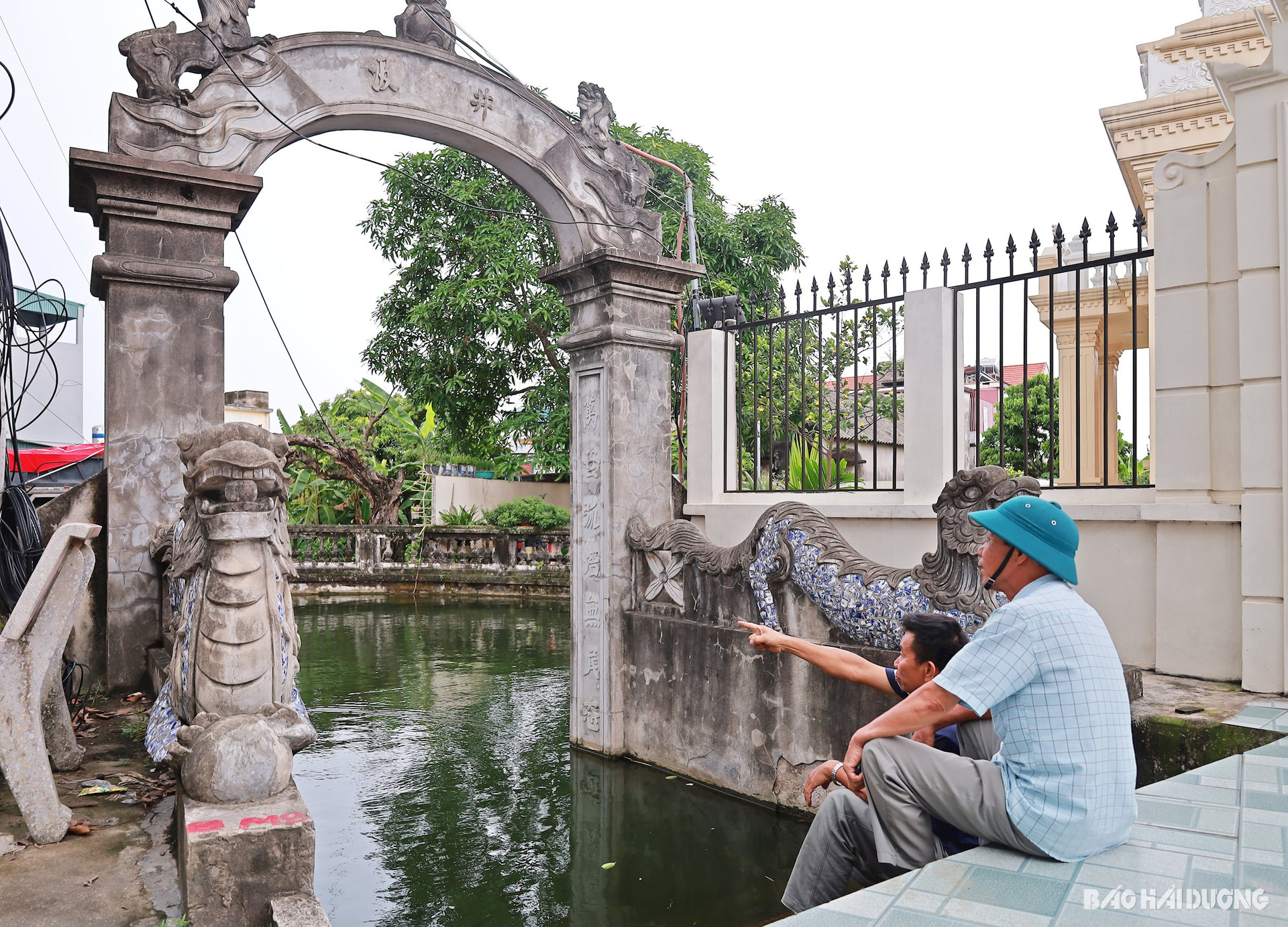
Binh De village, Gia Khanh commune (Gia Loc) still preserves 2 ancient wells with a diameter of about 14 m, 8-9 m deep, clear water, never running dry. The architecture of the 2 wells is quite unique with gates decorated with dragons on both sides.
According to Mr. Nguyen Van Tuyen, Party Cell Secretary and Head of Binh De Village, although the village well water is no longer used for daily activities, it is still strictly protected. People are allowed to draw water for their family's needs but are not allowed to bathe, wash their hands and feet or throw garbage into the well. According to folk beliefs, the village well is considered a sacred source, a place where water and blessings gather, and has spiritual value, so it needs to be preserved. "In the process of building a new countryside, the existence of the village well, banyan tree, communal house yard... contributes to creating an image of the countryside that is both fresh and ancient and rustic. No matter how modern the homeland is, it cannot lose the cultural beauty that has existed for generations," Mr. Tuyen emphasized.
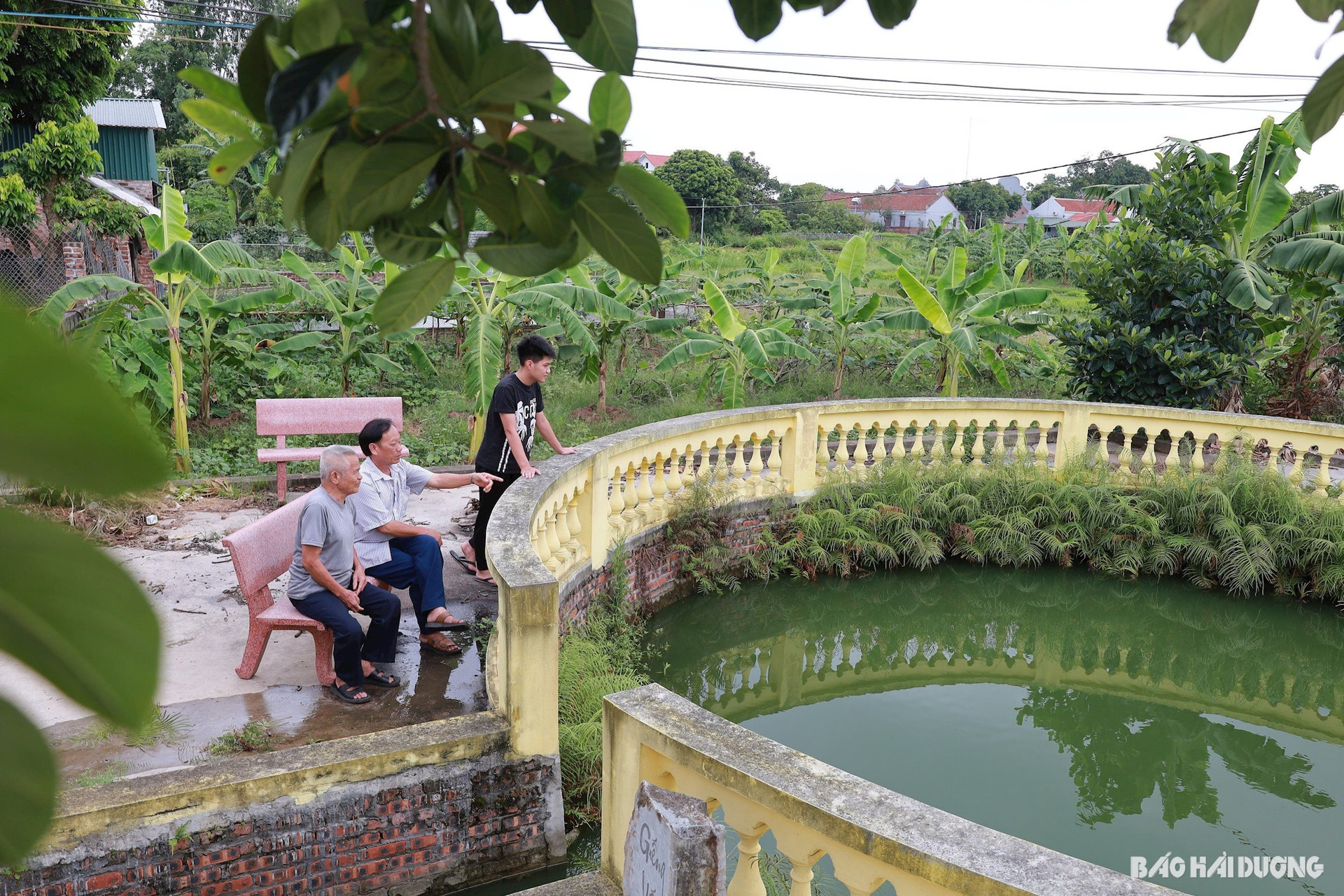
Every day, Mrs. Nguyen Thi Huong and some people in Dinh hamlet, Nghia Phu village still go to draw water from Viet well to water their plants. She said that some households still use this well water to make wine because they think that wine made with village well water is more delicious and less wasteful. Every afternoon, Mrs. Huong and many people in the hamlet invite each other to sit at the well to enjoy the breeze, telling each other stories related to daily life and work. Mr. Vu Van Anh, 18 years old, often follows his grandmother to the well to play and said: "I think restoring the village well has a lot of value. First, it helps young people like me understand the culture and difficult life of a bygone era. Second, it helps the village have another community activity spot, helping to strengthen the village and neighborhood relationships."
Mr. Nguyen Van Hoe, an overseas Vietnamese, has just returned to his hometown in Kim Doi village after decades of settling in the Czech Republic. He is impressed with the changes in his hometown and is happy that the villagers care about preserving and embellishing the village well. As a child, Mr. Hoe lived with his family next to the village well. His childhood years were therefore closely associated with this place. Those were the summer noons when he went to the well to catch shrimp, the afternoons when he and his friends went out to play all kinds of games under the tree next to the well... When he was tired from playing and thirsty, he would go down to the well to scoop up water and drink it in one long gulp. "Visiting the village well again, so many beautiful memories of my childhood came flooding back, including the images of my parents and siblings. I followed the steps up and down the well, scooping up water to wash my face with that cool, clear water. It felt refreshing and strangely peaceful."
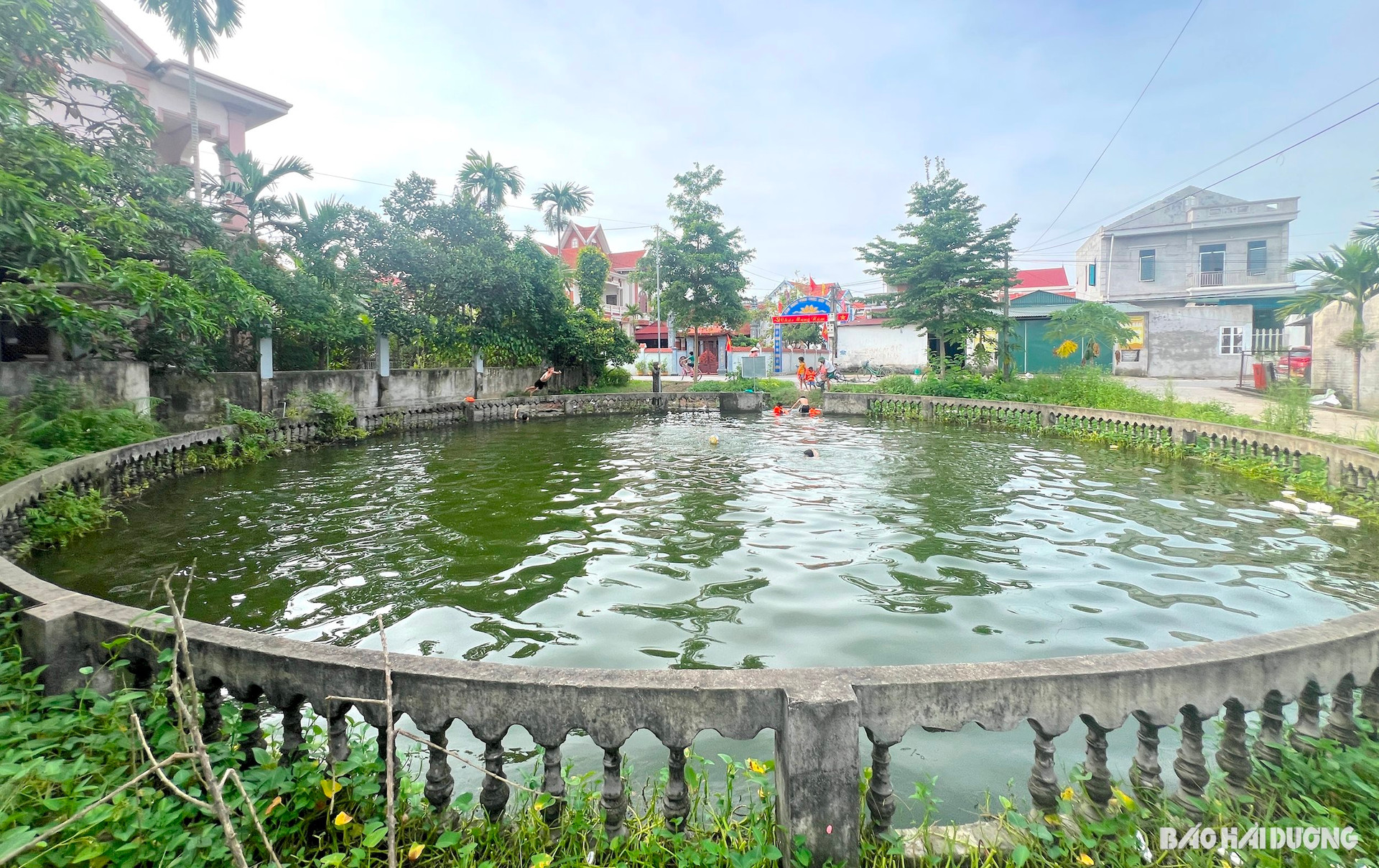
In many places in the province, village wells have been converted by local people into places to grow lotus and create landscapes. Some wells are used as places for children to practice swimming. During the festival season, village wells are also the place where some spiritual rituals take place, Quan Ho singing on boats, and folk games such as duck catching are organized...
Historian Dr. Le Duy Manh, Deputy Head of the Con Son - Kiep Bac Relic Management Board, said that the village well has long been a cultural space, a symbol of spiritual value for many villages and residential areas. The village well is closely associated with the rhythm of life, an important place for the community, contributing to connecting and building stronger village and neighborhood relationships. On the other hand, the village well is also an address to educate the young generation about local history and culture today and tomorrow...
The economy and people's lives are increasingly improving. People with conditions actively participate in renovating and preserving village wells, restoring traditional cultural values, which is also a way to express love for their homeland and country. This is passed down from generation to generation, contributing to reminding generations to always remember their roots. "The village well will certainly exist and promote many spiritual values in the present as well as the future," Dr. Manh commented.
GOING STRONG